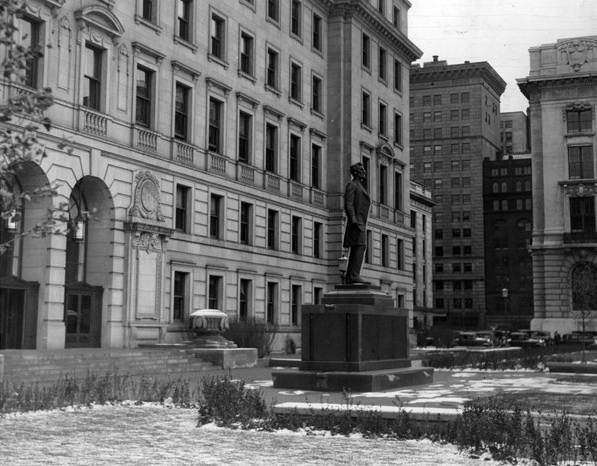Cleveland Board of Education Building

Until 2013, the administrative headquarters of the Cleveland Board of Education was an iconic sandstone, Beaux-Arts structure located at 1380 East 6th Street on the east side of Mall A. Listed on the National Register of Historic Places since 1975, the 1931 building was designed by Walker & Weeks, which arguably may have done more to define Cleveland architecture than any single firm. In addition to the Board of Education Building, Walker & Weeks designed Cleveland’s Public Auditorium; Federal Reserve Bank; Public Library; Severance Hall; Allen Memorial Medical Library; Lorain-Carnegie Bridge; Cleveland Municipal Stadium; Warner & Swasey Observatory; and numerous churches including St. Paul’s Episcopal, Epworth-Euclid Methodist and First Church of Christ, Scientist.
Completed in 1931, the Cleveland Board of Education Building was the last piece in the Group Plan vision for Cleveland’s three Malls (A, B and C). Around that time, the Malls were expected to replace Public Square as the center of downtown. The idea was to honor the Progressive Era and the City Beautiful Movement by creating urban paradises to counter the upheavals caused by rapid industrialization. The “re-centering” idea obviously didn’t pan out, but the Board of Education building nonetheless took its place as an aesthetically pleasing cornerstone to a space that may never have looked better than it does now.
The Board of Education building’s two-story lobby features marble columns, massive arched windows, bronze chandeliers and two Depression-era murals that flank the space: "The Progress of Education" and "The Branches of Education" by Cleveland artist Cora Holden. Further enhancing the structure is a statue of Abraham Lincoln located on the west side of the building facing the Mall. Sculpted by Max Kalish, the statue was installed in 1932 in front of the building which, at that time, faced west toward East 4th Street (East 4th was removed in 1988). Donations from Cleveland schoolchildren helped pay for the statue. Lincoln’s Gettysburg Address is carved on its base.
The Cleveland Metropolitan School District occupied only about half of the building when Drury Hotels bought it at auction in early 2013 for $4.5 million. Three years later, following a three-year, $52-million renovation, a 189-room Drury Plaza Hotel opened in the 85-year-old structure. The school district’s administrative functions are now located at 1111 Superior Avenue, in the former headquarters of Eaton Corporation.
Images



